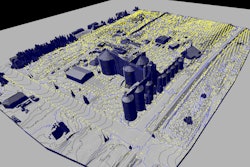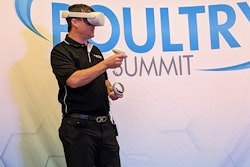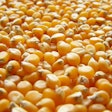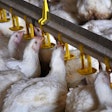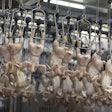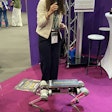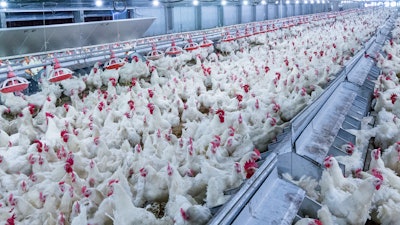
Wireless mesh technology that uses artificial intelligence (AI) could analyze and proactively adjust a range of poultry house environmental controls, saving on energy costs and boosting poultry performance.
“We use mesh technology to ultimately communicate with all the devices in the house and measure. But really, the holy grail for us is the essence of using artificial intelligence and machine learning,” Mark Maxwell, Agrimesh Technologies CEO, explained at the 2023 Poultry Tech Summit.
Most environmental control systems in use today are “reactive systems” that rely on growers to control the changes in poultry house environments, he added.
New technology not only reacts to changes in ventilation, heating, feed and water within the poultry house, but also uses the weather forecast to anticipate how the weather outside impacts conditions inside the barn. Temperature and ventilation automatically adjust to reach and maintain pre-established setpoints.
“What’s really different about this technology is you’re setting your setpoint temperature, humidity and lighting and allowing the system to dynamically manage all those different components in the house to hit those set points,” said Maxwell.
For example, if cold weather is predicted, the system calculates the energy strategy needed to maintain optimal conditions.
How the smart controls work
Sensors placed on the equipment producers would like to control wirelessly and automatically collect data that is sent to a wireless hub and AI software. The software can independently make decisions to help optimize the energy strategy for a house. There is also a mobile application that producers can use to review the data and be notified about anomalies, which could indicate equipment failure or other problems in the poultry house.
Preliminary research suggests that the smart controls can reduce poultry mortality and improve feed conversion ratio (FCR), in addition to energy savings.




